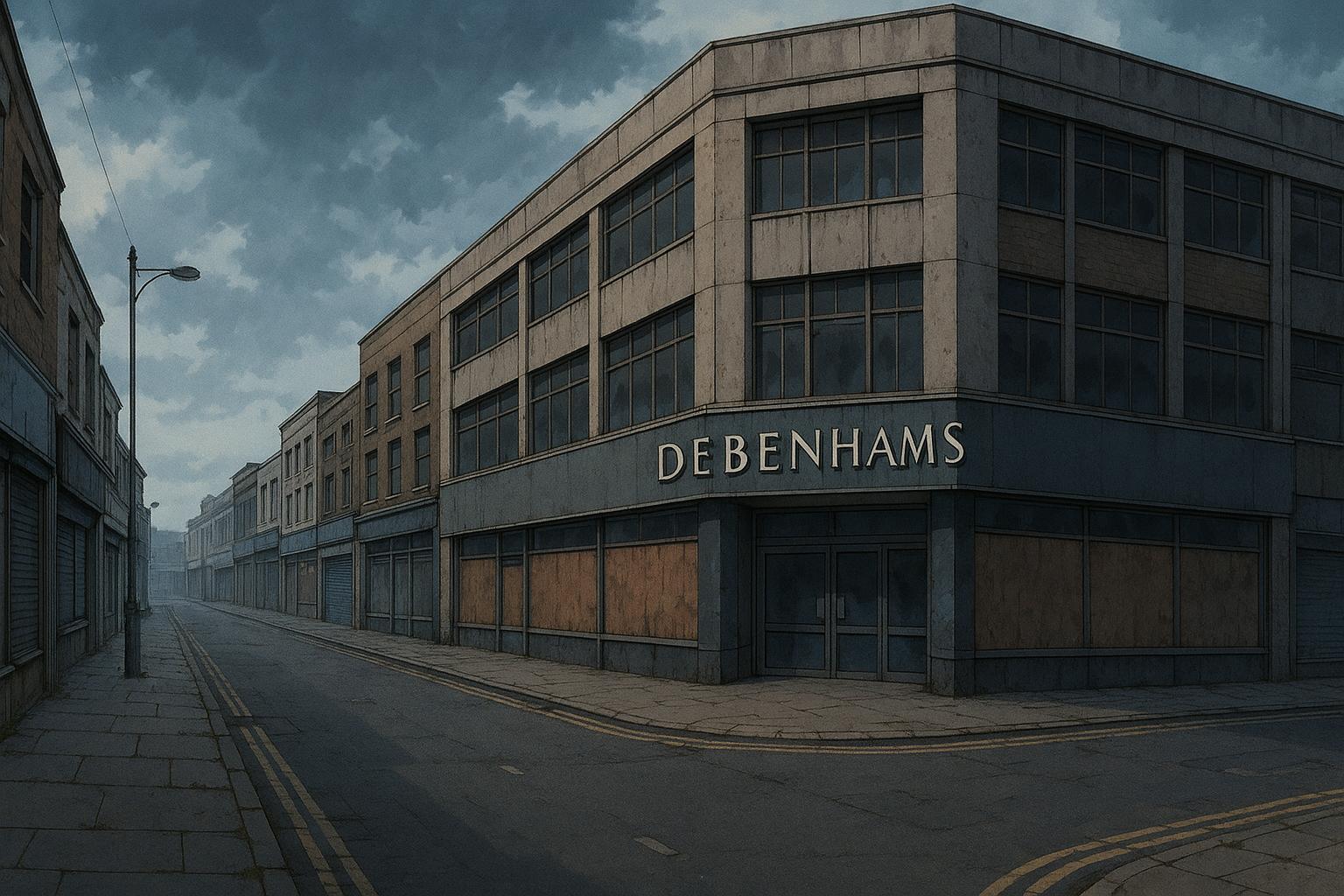Britain's high streets are facing an existential crisis, evidenced starkly by the demise of Debenhams, a once-vibrant pillar of the retail landscape. The department store, which thrived for over 200 years, succumbed to financial pressures exacerbated by evolving consumer habits and the challenges of the COVID-19 pandemic. The void left by its departure is palpable, as around 73% of its former locations remain empty, creating a concerning blight on town centres. This dramatically underscores a broader retail crisis, with many towns left wrestling with the ghostly presence of the hollowed-out stores.
Debenhams went into liquidation in 2021, resulting in an estimated 12,000 job losses. The aftermath has seen derelict premises—some merely boarded up, while others are cloaked in scaffolding, awaiting redevelopment into residential spaces. Residents like Antonia Cook, 25, express a nostalgic yearning for the past when the store was a bustling hub, contributing to a sense of community that has now faded. As she remarked, the area feels increasingly desolate, reminiscent of a ghost town dominated by generic establishments like barbers and vape shops.
The impact of Debenhams' closure has rippled throughout the communities it once served. Councillor Neil MacDonald of Ipswich Borough Council has voiced concerns over the negative influence of the shuttered Debenhams on the town's vitality, indicating that its vacancy can deter new business investments. This sentiment resonates with many locals, including 78-year-old Dorothy Lumb, who lamented the decline of high street shopping, underscoring the emotional connection people have with what were once integral parts of their shopping experience.
While Council leaders are keen to repurpose these empty sites, they face mounting challenges. The sheer size of many Debenhams stores limits their attractiveness for new tenants, with Paul Dobson, a professor at the University of East Anglia, highlighting that large retail spaces are no longer viable in an age dominated by online shopping. His analysis reveals a troubling cycle: as vacancies increase, the attractiveness of town centres diminishes, further perpetuating a downward spiral.
Recent data shows that repurposing efforts have been slow, with only a minority of former Debenhams sites earmarked for future use. Retailers like Marks & Spencer and The Range have taken over select locations, but the bleak reality is that many sites remain stagnant. In Ipswich alone, while the local council has reported interest from prospective tenants, significant delays and unfulfilled negotiations have left the store's fate uncertain.
Amidst this retail landscape, measures like potential reforms to business rates are being explored. According to the British Retail Consortium, high business rates create formidable barriers that deter new store openings, contributing to the high vacancies seen across the country. Helen Dickinson, the chief of the BRC, emphasises that the current system suppresses investment, particularly as larger retailers anchor foot traffic for smaller shops. Conversely, there have been hints of optimism, with Dickinson noting that footfall has shown signs of revival recently.
Despite the bleak outlook for many high streets, the current climate has prompted some innovative responses. The Frasers Group, which owns House of Fraser, has begun transforming former Debenhams locations into multi-brand experiences, signifying a shift in strategy to adapt to the changing retail environment.
Nonetheless, the struggle to revitalise these sites reflects broader societal issues. Local residents have expressed concerns that unoccupied stores attract anti-social behaviours, with some locations becoming hotspots for vandalism and rough sleeping. This unsettling reality has fostered a sense of insecurity among residents, further diminishing the likelihood that shoppers will frequent these desolate areas.
The stark reality of the changing retail landscape is that, unless significant investment and strategic overhaul occur, many former high street stalwarts may remain abandoned markers of a bygone era. For towns like Ipswich and Norwich, the challenges are steep, but with the right policies and community engagement, there remains a glimmer of hope for revitalisation. As the British high street navigates these choppy waters, the compelling need to rethink and renew the shopping experience will determine its trajectory for years to come.
Reference Map:
- Paragraph 1 – [1], [3]
- Paragraph 2 – [1], [2], [4]
- Paragraph 3 – [1], [5], [6]
- Paragraph 4 – [2], [3]
- Paragraph 5 – [1]
- Paragraph 6 – [1], [2]
- Paragraph 7 – [1], [6], [7]
- Paragraph 8 – [1], [6]
- Paragraph 9 – [1], [3]
Source: Noah Wire Services
